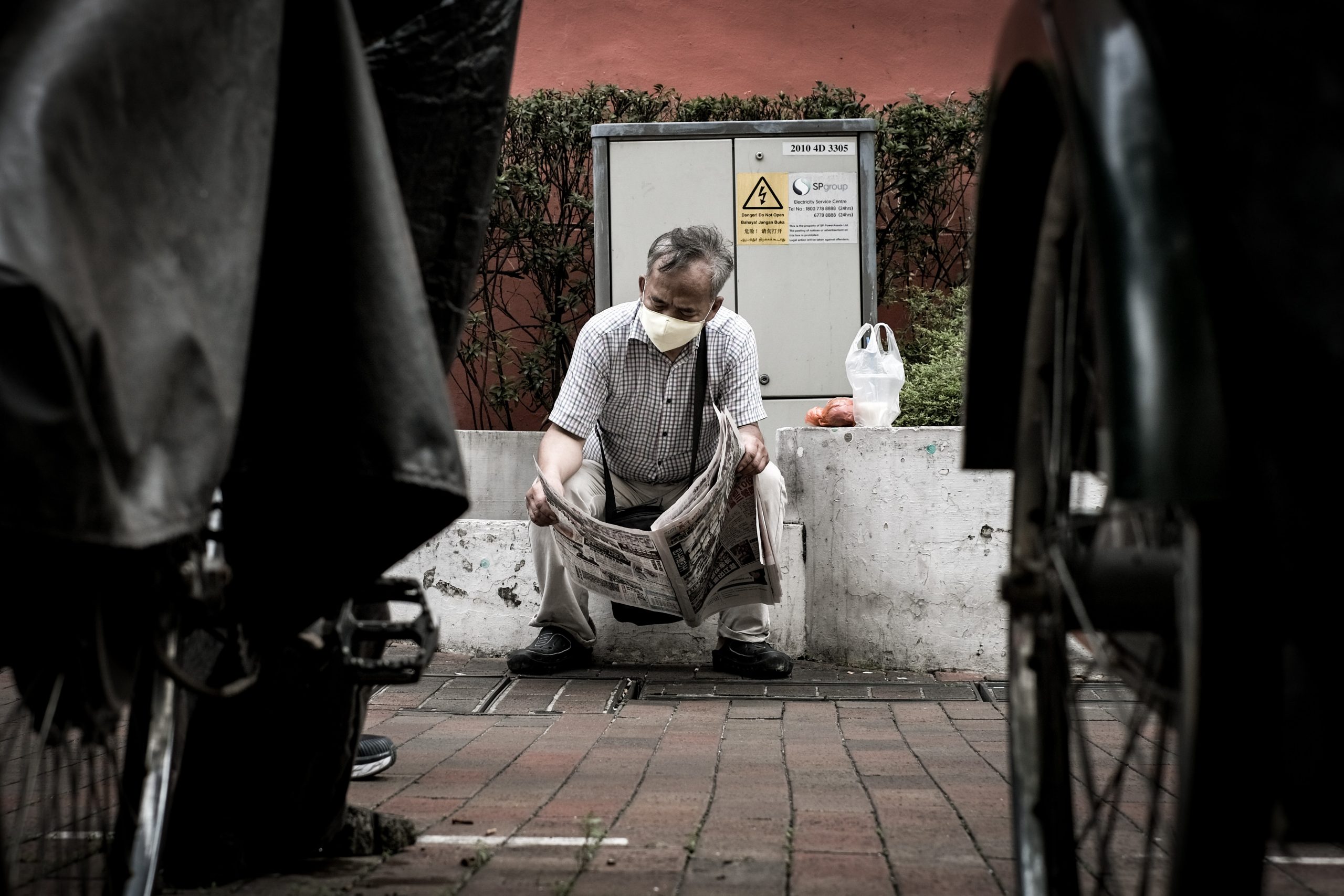Top Image: Tey Liang Jin / RICE File Photo
As an online media publication, we’re occasionally accused of sensationalism. Fair!
Readers would much rather click on an article called 3 Reasons Why RICE Media Is Clickbait. In comparison, far fewer people would click on an article called The Structural Barriers to Reducing Sensationalism in Singapore’s Media Landscape.
It comes with the territory of online journalism. Hooky headlines and sensational content are shortcuts to easy page views. Page views mean more eyeballs. More eyeballs mean more leverage to obtain advertisers. More advertisers mean more money for the company. And everyone wants to get paid.
Of course, the chase for clicks and attention is the reason why the state of journalism is the way it is today. On 19 March, Deputy Prime Minister Lawrence Wong warned precisely against “clickbait, sensationalist” content at the 25th Anniversary Gala Dinner for CNA.
The sentiment is nothing new; clickbait and sensationalism have been worrying (and common) features of the new media for years. But in the context of Singapore’s media landscape, there are inescapable reasons why local publications—particularly those without express government backing—find it so hard to avoid such practices.
There are ways to combat clickbait and sensationalism, but those solutions might be too difficult for some to accept.
Media Sensationalism and an Existential Crisis
DPM Wong’s underlying message is important—sensationalism does have the potency to polarise and divide. Online falsehoods should be mitigated, especially by those with malicious intent.
But even for those that aren’t intending to scam, there is potential to do harm.
In September last year, a content creator fell victim to cyberbullying after Mothership published an article about her—a piece that incorrectly identified the woman as a “tourist from China”.
The original article incorrectly portrayed the supposed “Chinese tourist” as saying that coming to Singapore is no different from staying in her home country—the Chinese brands she found in Singapore could also be found in China.
But she was no tourist; she had resided in Singapore for the past eight years. The article was corrected later on, but by then, the damage was done. The original article opened up the dam for Singaporeans to push xenophobic sentiments across the internet.
As much as it’s objectively right to push against sensationalism at the expense of accuracy, the reality of resisting the pressures of publishing such content comes easier for some than others. Independent media outlets are burdened with an existential crisis. Witnessing the fall of award-winning giants like Buzzfeed News and Vice Media only adds to the anxiety.
Be the first to break the news and see Google Analytics go brr? Or take the time to verify everything and think of something valuable to add—only to see another publication publish it first and get all the eyeballs?
The conundrum is understandable. For any publication, page views determine whether we get interest from advertisers. Essentially, page views keep the lights on.

Media outlets know this for a fact. At another point in Singapore’s cultural history, STOMP was the source of clickbait content. The portal which once dangled the promise of supermarket vouchers in exchange for a juicy story. Of course, they knew what they were doing. Flutter free supermarket vouchers in front of Singaporeans, and all hell breaks loose.
STOMP grew into a portal for tattling on thirsty teenagers of all kinds: (1) Those sipping on their Slurpees on the MRT (2) Those sucking each others’ faces off at the HDB stairwell (3) All of the above at the same time.
That’s not to say clickbait content doesn’t have value. And sensationalised content wouldn’t exist without a market that wants it. Singaporeans do need a form of escapism; reading about the political and economic state of the world all the time is exhausting. Everyone can appreciate cutesy coverage of what local otters are up to.
There’s nothing inherently wrong with such an editorial direction. Community news outlets clearly serve a purpose in the local ecosystem, and they do it well enough to stay sustainable.
But outrightly resist sensationalism? That’s tough.
There are only a handful of other ways for media outlets to survive here. Some rely on subscriptions as a source of revenue, which can be challenging due to the size of the local market and how people don’t like paying for news—one simply has to look at the complaints railed against The Straits Times for their paywalls as proof. Others have to branch out to become content agencies or sell merch.
Essentially, there are few options to stay viable as a business in the news media industry if you don’t have state backing. You have to play nice and stay within OB markers if you want to survive.
Independent media outlets, which are usually smaller, operate without the same massive resources, manpower and access to information. To stay afloat and stay relevant in the public eye, publications have to get creative. And that means selling their journalistic souls (to an acceptable extent) to sensationalise content.

The Dilemma of Media Literacy
As DPM Lawrence Wong rightly pointed out in his speech, the rise of sensationalism is partially due to changing media consumption patterns. Sometimes, a story just needs a slightly spicy headline to reach the masses and increase engagement. That’s just how it is in today’s media game.
We can resist Facebook, Instagram, and TikTok all we want, but we can never escape the fact that social media is a huge player in pushing content out. The nature of these platforms demands methods which attract the most engagement. Its algorithms require attention-grabbing content from the get-go.
Even if a media outlet were to take a principled stand against sensationalism, articles, videos, and short-form posts are naturally crafted to keep your attention for just a little bit longer. There is absolutely no way to frame something without aiming to retain attention.
Content creation is challenging for everyone, regardless of affiliation. Political party publications like Petir aren’t above sensationalist headlines from time to time.
“In the war against scams, why is the WP more interested in pontificating?” one headline reads. “(Opps) they did it again…the trouble with WP’s New Year Day message,” another states.
Of course, this is their prerogative as a political publication. But the point still stands. Catchy, clickbait-y hook readers (and potential voters). They’re effective—there’s no doubt about that.

Sure, there are indeed media outlets that deal in misinformation, falsehoods, and inaccuracies. Laws like POFMA are designed to ensure they’re accountable for their actions.
But the digital realm is a free-for-all. Punish one media outlet into obscurity; another one will re-emerge in another form down the road.
Media outlets, regardless of their size, are not exempt from sensationalising to a certain extent. People are just inherently more interested in content packaged in a dramatic way. It’s just human nature.
Perhaps, in a controlled media landscape, the next step could be media literacy. Interestingly, that would mean supporting more media outlets outside of the mainstream. We have to recognise that there is value in content that doesn’t always sit comfortably in the candid push for national development. That there is room to confront uncomfortable realities and the pain points we can afford to improve.
Media literacy can only be cultivated through exposure to more outlets with perspectives that go beyond the national narrative. At least, to the ones that are more responsible with information.

Threading the Needle
Media outlets compete for your attention. With social media algorithms and shorter attention spans, a sensational headline is an all-too-tempting solution.
Sometimes, it’s the only viable direction to survive in Singapore. It keeps the lights on, at least for a little while longer.
And it’s understandable because everyone wants to make a living. After all, the results speak for themselves when Singaporeans would rather click on something about Taylor Swift instead of dissecting the morality of indefinite jail time.







